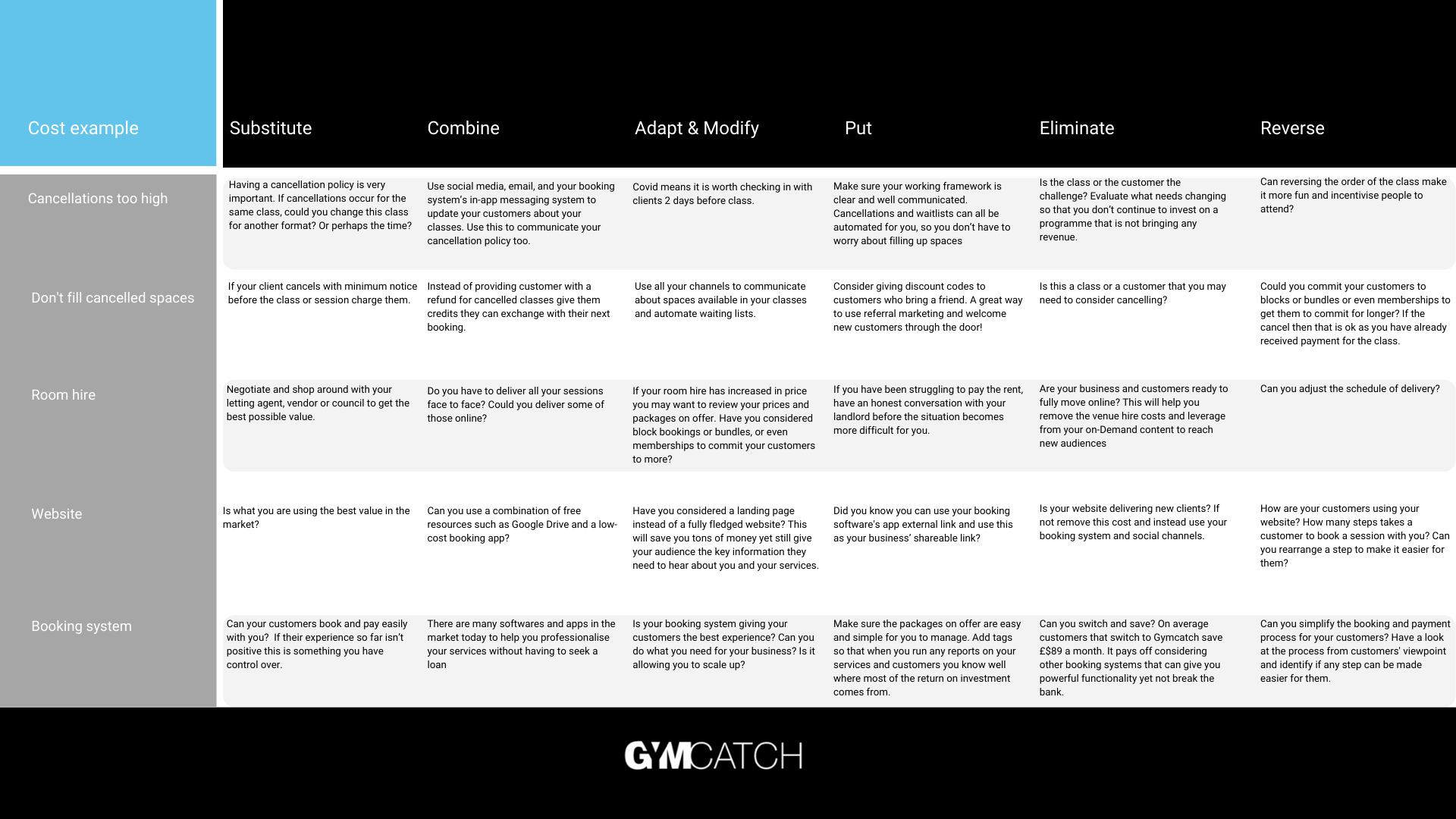
If you have been receiving too many ‘I’m sorry I won’t be able to make it today at the very last minute, is time to set a cancellation policy and start protecting your income. Make this task item number one on your to-do list and keep on reading.
“There’s nothing worse than a cancellation” is a phrase we hear quite often at Gymcatch. Although it’s not quite true. Worse than cancellations are last-minute cancellations, and worse still, a no-show.
We’ve all been in that situation where you have prepared for a training session or class and a client cancels at the very last minute. Handling late cancellations and no-shows can be very difficult for your business, eat away precious income and waste the opportunity to get a new face or different client into the session.
Cancellations and no-shows are out of your control but they are bad for business and bad for morale. What you can do is two things:
1) encourage responsible behaviour of your client base so to minimise cancellations, maximise the notice they give you when they cancel and eradicate no-shows in all but extreme cases; and
2) mitigate the financial risk of cancellations.
There is a stack of evidence and proven processes which tells us that you can stop cancellations blighting your business. You don’t need to accept a high drop out rate and you shouldn’t.
Take payment at the point of booking
Cancellation rates at businesses where the client pays at the point of booking are 40% lower than at businesses which operate a pay-on-the-door model.
It’s just a fact of human psychology that once a client has paid for something they are far less likely to not show up or cancel it. Some businesses don’t like taking online payments either for reasons of not wanting to pay the card fees or because of additional admin. All the data points to that being a false economy. What you lose in card fees you’ll make back several-fold in reduced and non-refunded, cancellations.
This helps both sides of the cancellation risk: taking payment in advance reduces the number of cancellations and having the client’s money puts you in control of whether your policies allow a refund in the circumstances.
Do I need to let clients cancel at all?
A cancellation is always better than a no-show (because you’ve got a chance of filling the space). Not giving a client the means of cancelling doesn’t stop them from cancelling, it just means they don’t turn up and you won’t know about it in advance.
This is where having a booking software that automates tasks for you, such as booking confirmation messages and reminders, can be very useful and help reduce your no-shows as well as save you time. If you take a proactive approach, you will help minimize no-shows.
Automation of waitlists and refunds
While you can reduce the number of no-shows and cancellations they can’t be eradicated. But encouraging clients to act responsibly and follow a clear process if they need to cancel maximises the chance of you not being out of pocket.
Making it simple to cancel (and receive a refund if it is due) incentivises clients to do this and give you maximum notice.
And for clients who want to take a cancelled space, an instant waitlist which converts to bookings and that is easy to use saves you the bother of phoning round to try and fill a spot.
Do I need a cancellation policy?
Yes, you do. Every business should have a cancellation policy that sets the boundaries of its services. You don’t need to be a lawyer or to copy someone else’s policy. It just needs to very simply and in plain language set the rules that clients need to know when they book.
With this clear, no-surprises, approach a cancellation policy’s role goes beyond protecting your income and also protects your relationship with your client as it stipulates how you work and what your working boundaries are. Most client-provider relationships that break down, do so because of a lack of communication.
Don’t be afraid of making the terms onerous. Strict cancellation policies will encourage good clients to book rather than put them off because it places real value on the place – it demonstrates scarcity and that the client is buying something in demand.
Setting the tone at the very start, for example at sign-up stage will help bring more commitment from the client too. This doesn’t mean that you can’t use your discretion when a client comes to you with some particularly difficult circumstances – you’ve always got that option.
What should I include in a cancellation policy?
- Contact information
How to contact you or your gym or studio. If your client needs to contact you to cancel a session make sure you tell them the process for that. Do you want them to contact you directly, if so how. Or do they need to cancel their booking on your booking system? - Cancellation without penalty?
Are you going to allow clients to cancel and provide them with a refund, provided they give you sufficient notice?
Not all businesses do this. Some say that once you’ve booked there are no refunds. Others will always provide a refund no matter when the cancellation comes in. Most businesses fall somewhere in the middle.The whole point of this is to maximise your chance of selling the space that the client is cancelling. If you’re a business with packed waitlists and are regularly over-subscribed and your services are easy to participate in at short notice you can afford to allow cancellations until relatively late. E.g. 48 or 24 hours before the start time.If your session is harder to fill, you don’t have a regular waitlist, or the class is difficult to participate in at short notice then you will probably want the place on sale for longer. E.g. 1 week.We find that cancellation policies which allow refunds up until a few hours before the class start time are counter-productive and see low levels of client uptake on the newly available and more frequent cancellations.at least 24 or 48 hours before. Some will even charge a penalty fee if the 24- or 48-hour timeframe has been breached. If your client has adhered to the timeframe, however, you can give them the option to book into the next session. - Cash refunds or credit
It’s important to state in your cancellation policy whether you will issue a monetary refund, allow to reschedule or even include a penalty fee. Offering a refund in the form of a credit to book another session will usually be the better option. It cheats the revenue in the business, is lighter on admin and acts as a better tool for retention. - Agreement
When a client makes a booking you’re entering a contract with them so you need to know that you’ve got their agreement. Make sure they read and understood both your cancellation and refund policies. Having your clients tick or sign in the agreement will save any misunderstandings as they’re in clear knowledge of how you operate.
Gymcatch helps you minimise the number of cancellations. Our online booking software and management system lets you set your cancellation policy to suit your business needs. You can choose to automatically credit customers with a class package that lets them book a replacement class if they give you enough notice. And although cancellations are inevitable and when this happens, our waitlist feature set allows you to fill up the cancelled space fast.











